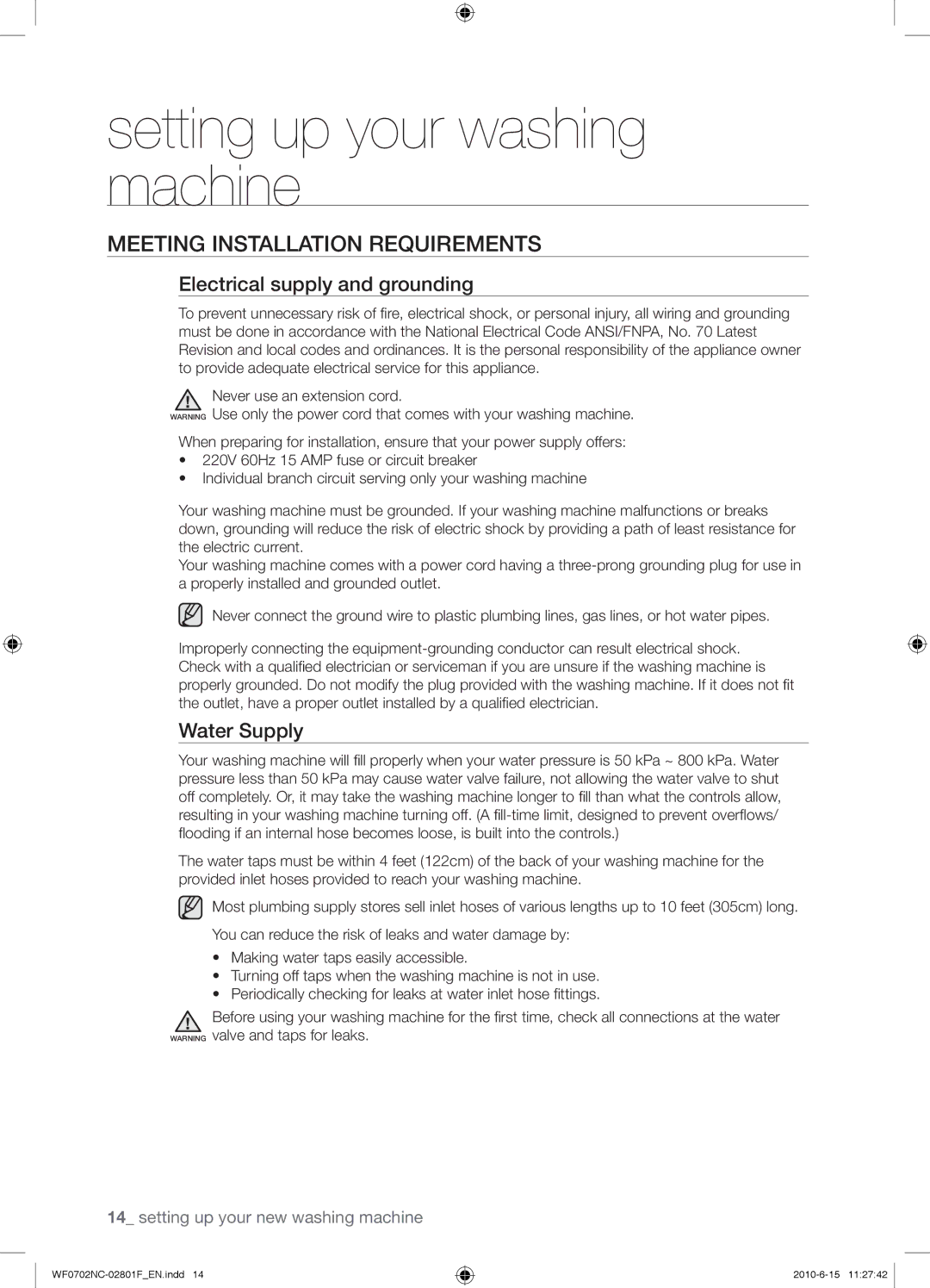WF0600NCW/YL, WF0500NCE/YL, WF0500NCW/YL, WF0600NCE/YL specifications
Samsung is a leader in electronics, and its line of washing machines exemplifies the brand's commitment to innovation and quality. Models such as the WF0600NCE/YL, WF8622NHW/YLE, WF0604NBE/XEE, WF8590NMW8/YLP, and WF8590NFWDYLP stand out for their advanced features and technologies, designed to enhance the laundry experience.The WF0600NCE/YL showcases Samsung’s Ecobubble technology, which efficiently dissolves detergent bubbles and reduces energy consumption. This feature allows for effective washing at lower temperatures, protecting fabrics and saving on utility bills. The machine's 6 kg capacity and 1200 RPM spin speed ensure thorough cleaning while maintaining fabric integrity.
The WF8622NHW/YLE model offers an impressive 8 kg load capacity and features the innovative AddWash door, which allows users to add missed items mid-cycle without interrupting the wash. This convenience is complemented by a range of wash programs, including quick washes and delicate cycles, catering to various fabric types and soil levels.
For those needing a compact option, the WF0604NBE/XEE combines a space-saving design with 6 kg washing capacity. Its diamond drum technology minimizes fabric damage, ensuring all items are treated gently. The model offers smart features including a digital inverter motor for reduced noise and vibration.
The WF8590NMW8/YLP and WF8590NFWDYLP are designed to meet larger laundry needs, with 9 kg capacity. Both models utilize Samsung's Vibration Reduction Technology (VRT) to maintain stability during high-speed spins, ensuring a quieter operation. Their eco-friendly wash options reflect a commitment to sustainable living while delivering powerful cleaning performance.
Additional features across these models include a user-friendly digital display, multiple eco-friendly cycles, and smart sensor technology for detecting load size and fabric type. This adaptability makes Samsung’s washing machines an excellent investment for efficiency and convenience. With reliability and cutting-edge technology, these models continue to set the standard in home laundry solutions. Whether you're searching for compact efficiency, powerful cleaning, or smart functionality, Samsung's washing machines promise to deliver superior performance and ease of use.

